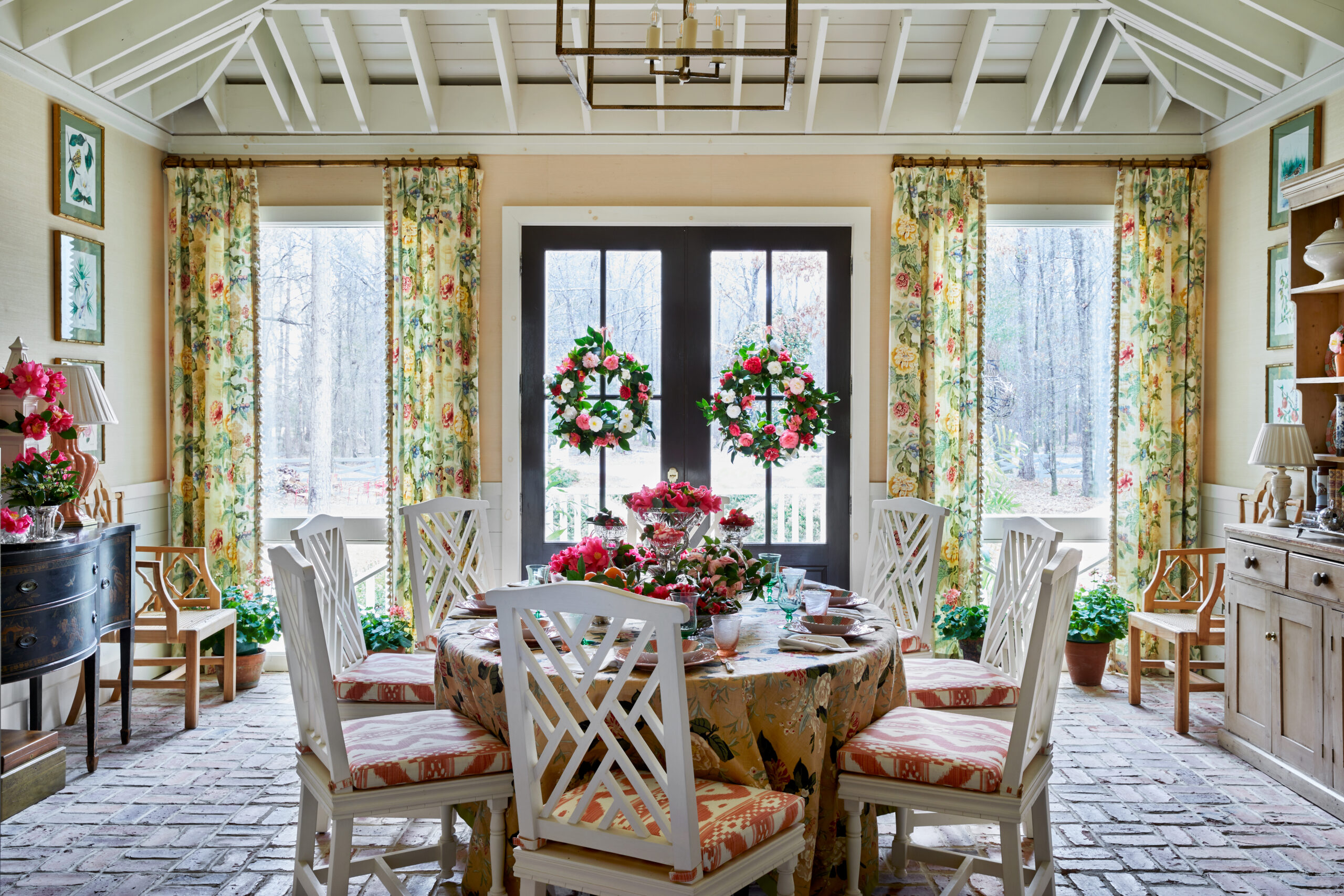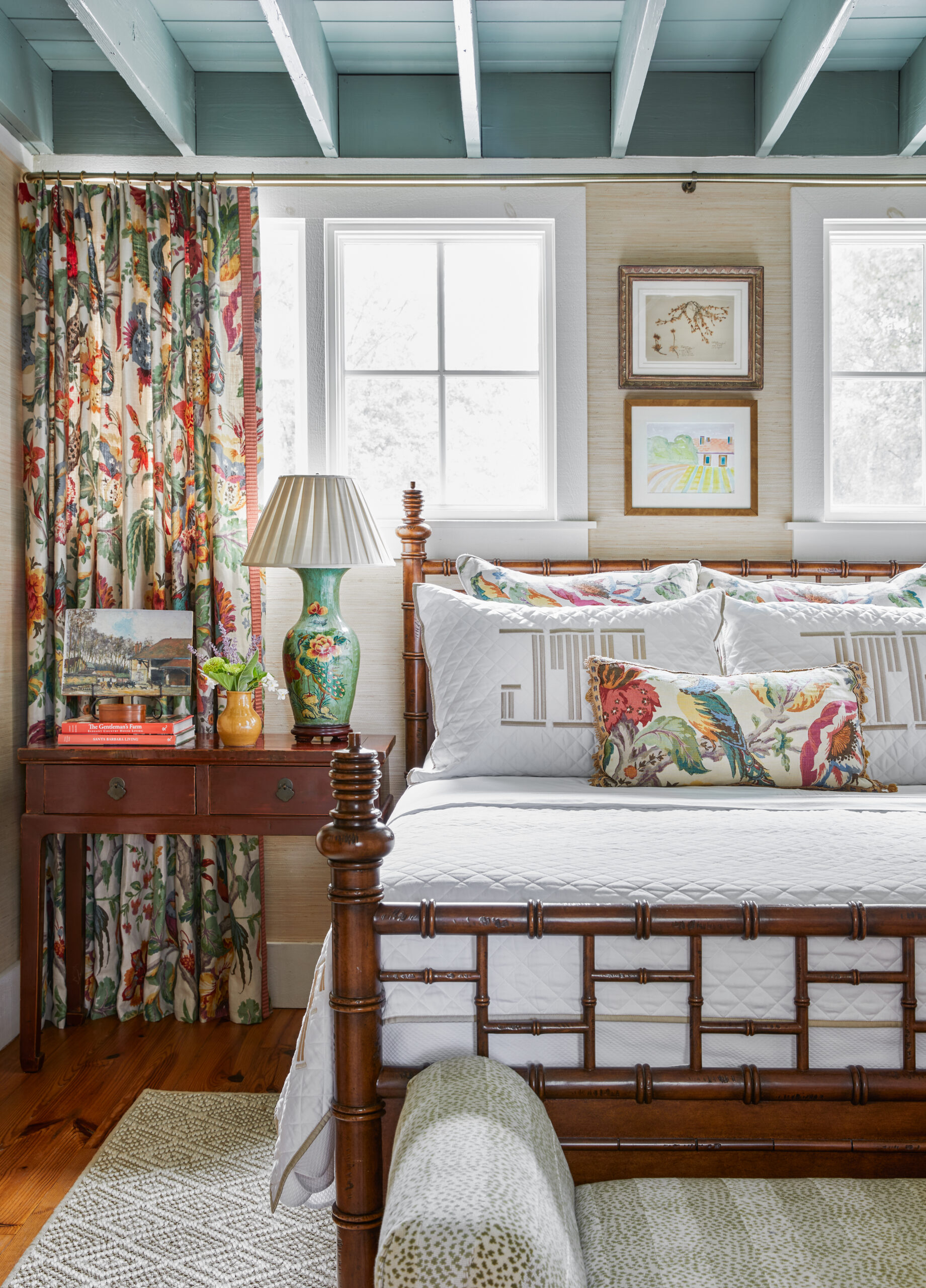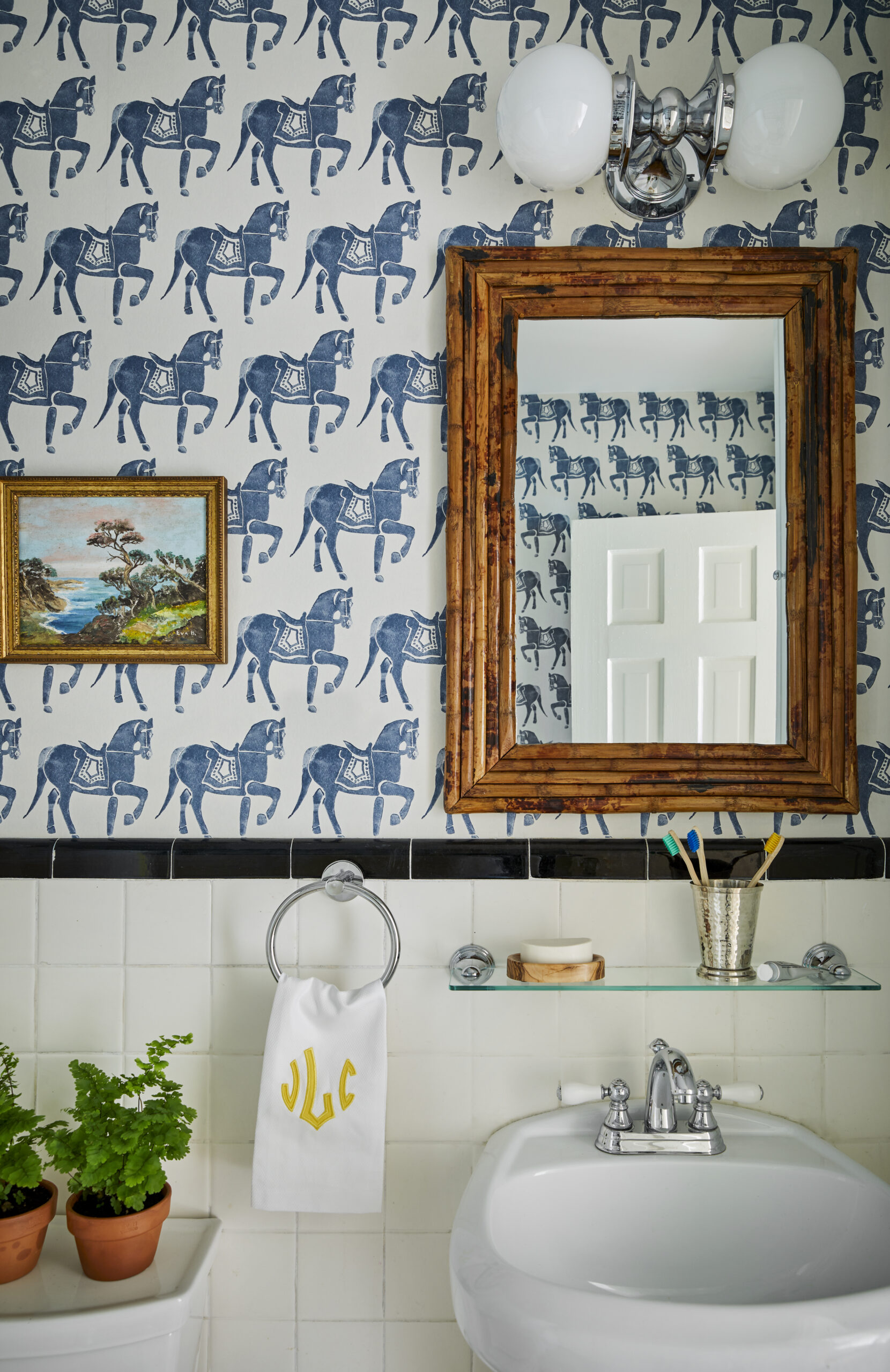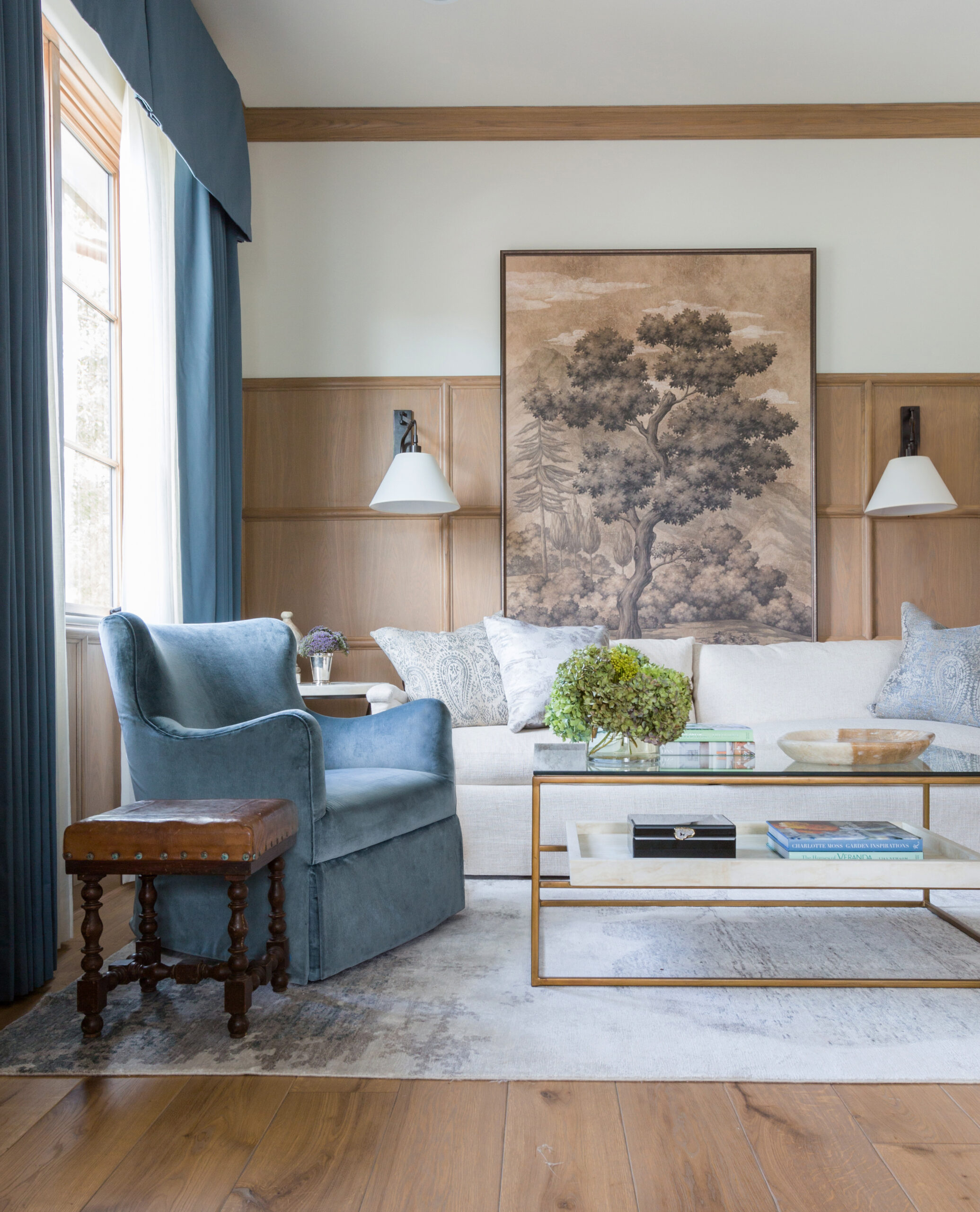Chances are you’ve obsessed over the window treatments and picked out the perfect throw pillows and put in the work required to make your space a true reflection of you. With a little know-how, it can be a huge asset—and you should take advantage of it. For tips and tricks on how to use your home to promote your business, we turned to Pamela Jaccarino, Editor in Chief of Luxe Interiors + Design, James Farmer of James Farmer Inc., and Elizabeth Blitzer of Blitzer & Company. They joined Benni Frowein, CEO of Schumacher Europe and Middle East to discuss the nuts and bolts of turning your home into your best advertisement.

For designers, throwing a party at home can be a great way to market your work. Designer and author James Farmer advises hiring a professional photographer for any such occasion, as he did for this elegant floral-filled luncheon he hosted at home in Georgia. That way, you’ll have a story at the ready should an editor or blogger come calling.
Emily FollowillYour Home Is Your Ultimate Billboard
Don’t underestimate the power of your own home. “It is the one place where a designer can marry their skills with their personality and show off their point of view, which can be a real selling point when it comes to promoting the firm and getting new business,” says Elizabeth Blitzer, who runs her own design-focused public relations firm. Pamela Jaccarino underscores that advice and adds that like any good advertisement, your home needs to tell a good story to be truly effective. “Editors and clients want a narrative: We all want to know not only your work, but who you are and what you are all about, and you can really bring that forth within your own home.”
James Farmer likens the look he’s able to achieve in his own abode to the salt on a chocolate chip cookie. “It allows me to add that little extra flavor, that touch you might not be able to try in someone else’s house.”
Have a Goal in Mind
To showcase your home, you need to photograph it. But before you take a single shot, decide what you want to use the photos for. Are you trying to get your house published in a national shelter magazine or a regional publication like Luxe Interiors + Design? Or are you creating promotional images for your social media accounts and your website? Read on, because the answer will determine how you should proceed.
Pause Before You Post
Magazine editors want fresh content that’s never been seen before. “If it’s important to you to get published in a magazine—which can give a young designer authority—don’t put every shot on Instagram because that’s a problem,” says Jaccarino. Once you’ve decided publication is your ultimate goal, refrain from posting anything other than a vignette or small moment until after the story appears in print. After then, you can go wild. The downside: Getting your work featured is hard, and it can take months for a story to go from a pitch to the page, so you might be waiting for a while.
The upside: You don’t need professional photos to pitch a national magazine. You need scouting shots: wide, full-room images you can take on your iPhone (make sure they are well composed and of high quality) to show the editor that the entire space is shootable and photo ready. If (and this is a big if) a magazine greenlights a story, they’ll hire a photographer, a stylist, and a writer—and your home will ultimately be in their hands. Don’t overlook pitching regional magazines: Blitzer says getting your work published in a place like Maine Home + Design is more likely to get you new clients than that elusive feature in a national title.
If, however, you know you want to post the photos right away on Instagram or your website, it’s worth hiring a professional photographer; it’s an investment that will make your work look perfect.
Must Every Inch of Your Home Be Camera Ready?
A magazine won’t do a feature on a single room, so if that’s your goal, the answer is yes. “At the very least, you’ll need to have the dining room, living room, master bedroom, kitchen, and master bath finished and ready to go—if you don’t show the whole house, they’ll think the project is incomplete,” says Blitzer.
If you’ve lavished all your attention (and budget) on a single perfect room, it’s ideal for posting on Instagram and sharing your creative vision with the world right away.

When prepping your home for a photo shoot, the details make a difference. From the monogrammed pillow shams to the fresh flowers to the one-of-a-kind artwork, this bedroom at James Farmer’s Georgia home is beautifully finished and styled—a design editor’s dream.
Emily FollowillWhat About Pick-Up Shots?
Smaller magazines sometimes accept pick-up shots—images that you’ve commissioned from a professional photographer—while national titles like Elle Decor typically only use their own photos. If your pick-up shots catch an editor’s eye, they’re most likely to use them for a short item or trend piece in the front of the magazine. “We have a huge kitchen and bath section in every issue, and the Wall Street Journal’s Off Duty section features pick-up photography, too,” says Jaccarino. So, if you’ve got some great images, it might be worth trying to pitch them before you post them.
Just be sure to take more images than you think you’ll ever need. “Completely overshoot it,” advises Blitzer. “That allows the editor to have choices, and come back and ask for a different angle, a wide shot, or a vertical or horizontal if they need it.”
Hire the Best You Can Afford
When it comes to producing images of your home to promote your business, all three panelists recommend hiring a photographer and a stylist if you can afford it. “You definitely get what you pay for,” says Farmer, who points out that their skill will elevate your work, and is therefore worth every penny. “Given what you spent on the wallpaper or the fabric, you don’t want to take cheap pictures.”
While the value of a photographer may be obvious, a stylist might seem superfluous at first glance, especially if you feel comfortable arranging your own rooms. “But stylists see things differently, they know how everything is going to look on the page, and they have a knack for making a room sing,” says Jaccarino.
Expect to pay $2,000 a day or more for a top photographer—but before hiring anyone, do your homework! Look through magazines and check out images on Instagram to identify someone whose work speaks to you, and then negotiate.
Live Well
Throwing a memorable bash in a beautiful space you designed yourself is a natural advertisement for your work. Give your guests a good time, and not only will they gush about it to all their friends—but you can make it a part of your marketing strategy, too. “If I throw a Christmas party at home, I hire a photographer to shoot it. Then, when a blogger comes to me looking for a story, it’s there in the can,” says Farmer. “I can say, ‘You know what? I had a great holiday party and I photographed it. Here it is.’”
“If you live well, there’s 10 stories in everything you do,” says Blitzer. “It’s not just a beautiful party, it’s 10 tips for decorating, 10 of your best holiday recipes, 2 alternative holiday color schemes.” Continually finding ways to repurpose and repackage your own home is a great way to keep your name out there—and every link from a blog or story will boost your SEO ranking.
Get the Details Right
Small things matter, especially when it comes to photographs, so pay close attention to these dos and don’ts:
- Photograph your home with beautiful natural light whenever you can—it makes a difference.
- Don’t over-style your photos. Jaccarino suggests taking a few things out rather than overstuffing an image.
- Keep flowers simple. A single stem can be more memorable than a big bouquet.
- Take exterior shots and include details on the architect and landscape designer whenever possible.
- Be conscious of your props, and don’t use the same ones over and over, advises Farmer, or your rooms will seem predictable.
- Try to keep your images evergreen. A bowl of strawberries on the kitchen counter will look out of place in the middle of winter.
Want to listen to our full conversation? Watch the full video with Pamela Jaccarino, James Farmer, Elizabeth Blitzer and Benni Frowein below and be sure to follow Schumacher on YouTube for more interviews with interior design tastemakers and webinars on the business of design.



